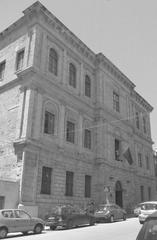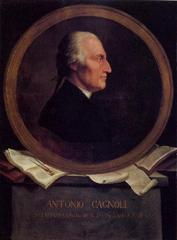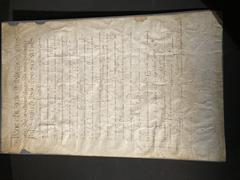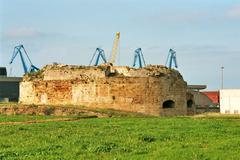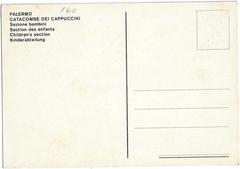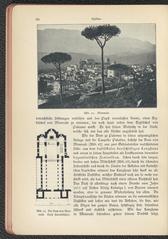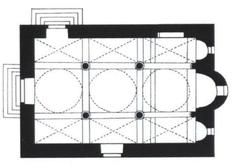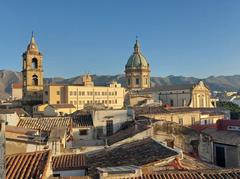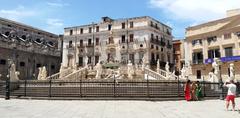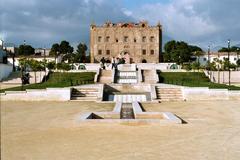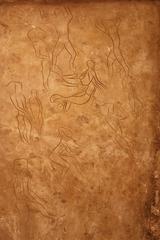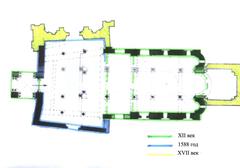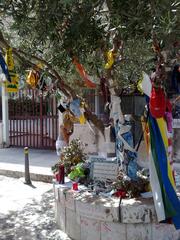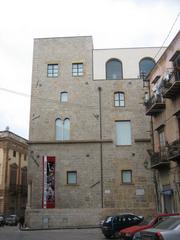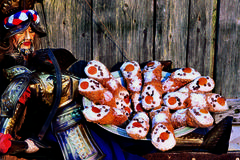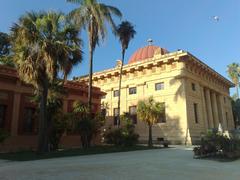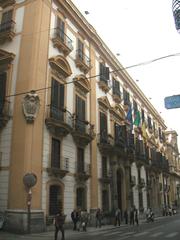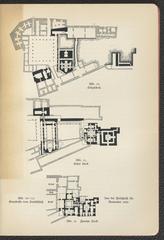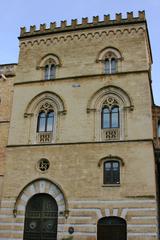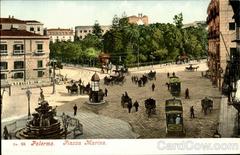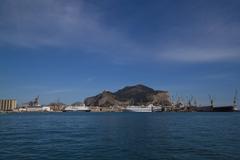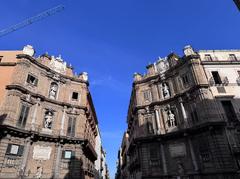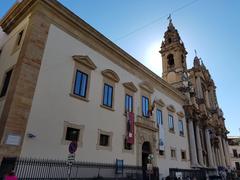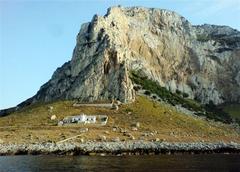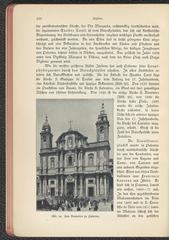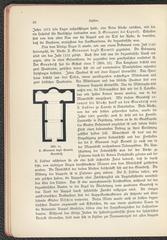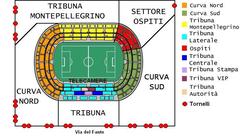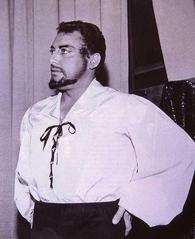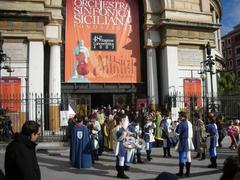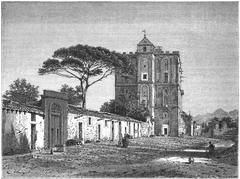
Cuba Palace Palermo: Visiting Hours, Tickets, and Historical Sites Guide
Date: 04/07/2025
Introduction: The Significance of Cuba Palace in Palermo
Located in the heart of Palermo, Italy, the Cuba Palace (Palazzo della Cuba) stands as a monumental testament to Sicily’s rich and multicultural past. Constructed in 1180 by King William II of Sicily as a royal pleasure pavilion within the lush Genoardo park, the palace encapsulates the harmonious convergence of Norman, Arab, and Byzantine influences that characterized medieval Sicily. Adorned with horseshoe arches and intricate Islamic-inspired stucco, the Cuba Palace was once surrounded by pools and gardens designed to provide respite from the Sicilian heat. Today, it is celebrated as part of the UNESCO World Heritage-listed Arab-Norman Palermo and the Cathedral Churches of Cefalù and Monreale, symbolizing centuries of coexistence and cultural exchange on the island (Discover the Cuba Palace in Palermo; Arab-Norman Architecture; Spotting History).
Quick Visitor Information
- Address: Via della Cuba, Palermo, Sicily
- Visiting Hours:
- Monday to Saturday: 8:30 am – 4:30 pm (last entry)
- Sundays and Holidays: 8:30 am – 12:30 pm (last entry)
- Closed December 25 and January 1
- Tickets:
- Full price: €19 (Fri–Mon), €15.50 (Tue–Thu)
- Reduced rates for students, teachers, seniors, and youth
- Exhibition-only tickets and audio guides available
- Free/discounted entry for children and local residents
- [Booking: Purchase online up to 20 minutes before closing (federicosecondo.org)](#booking:-purchase-online-up-to-20-minutes-before-closing-(federicosecondo.org))
- Accessibility: Partial wheelchair access; contact the site in advance for specific needs
Historical Background: Origins and Evolution
Commissioned by William II in 1180, Cuba Palace was conceived as a summer retreat in Genoardo—meaning “Earthly Paradise” in Arabic. Its position near natural water sources allowed for the creation of cooling pools and lush gardens, echoing the Islamic tradition of paradise gardens. The palace was part of a series of royal residences, including the Zisa and Maredolce, all designed to offer comfort and relaxation during Sicily’s hot summers.
Over time, the Cuba Palace has served a variety of roles—from royal retreat to military barracks, hospital, and prison—resulting in both damage and restoration. Despite these changes, the palace’s essential character as a symbol of cultural synthesis has endured, thanks to significant 20th-century conservation efforts.
Architectural and Artistic Highlights
Exterior Design
The Cuba Palace is a rectangular structure measuring approximately 31 by 17 meters, with fortress-like walls softened by horseshoe-arched windows and decorative pointed-arch lintels. The building’s symmetry, thick walls, and limited windows were practical for the Mediterranean climate and reflect the influence of Islamic and Byzantine architectural principles (Discover Islamic Art).
Interior and Water Features
Although much of the original interior decoration has been lost, historical accounts describe lavish stucco, painted ceilings, and mosaic floors. The palace was surrounded by an artificial pool and featured interior fountains, using water as both an aesthetic and cooling element—a hallmark of Islamic palace design (palermo.for91days.com).
Decorative and Artistic Influences
La Cuba is emblematic of the Arab-Norman style that blends Islamic, Byzantine, and Western European elements. Surviving features include an Arabic kufic inscription honoring King William II and remnants of intricate stucco and relief decoration (palermo.for91days.com).
Literary and Cultural Significance
The Cuba Palace’s influence extends beyond architecture. Giovanni Boccaccio set a novella in his “Decameron” at the palace, cementing its reputation as a symbol of beauty, luxury, and Palermo’s cosmopolitan spirit (Spotting History; Wonders of Sicily).
Visiting Cuba Palace: Practical Information
How to Get There
Located in western Palermo near the historic center, the palace is accessible by public transport (AMAT bus lines), taxi, or a short walk from central districts. Due to traffic restrictions in historic areas, public transit is recommended. Limited street parking is available.
Facilities
- Restrooms: On-site
- Bookshop: At the main entrance of the Monumental Complex
- Cafés/Restaurants: Not on the grounds, but nearby in Palermo
Accessibility
Some areas are inaccessible due to historic architecture. Contact the site for specific accommodations if needed.
Enhancing Your Visit
Guided Tours and Audio Guides
Audio guides are available for €5, and guided tours in multiple languages can be arranged in advance, especially for groups (federicosecondo.org).
Best Times to Visit
- When: Early morning on weekdays for fewer crowds and cooler temperatures
- Seasons: Spring and autumn for pleasant weather
Photography
Personal photography is permitted without flash or tripods. Professional photography requires prior permission.
Suggested Itinerary: Nearby Arab-Norman Sites
Palermo’s Arab-Norman sites form a UNESCO World Heritage circuit. After visiting Cuba Palace, explore:
- Palazzo della Zisa: Another royal palace with Fatimid influences
- Palatine Chapel and Royal Palace: Renowned for mosaics and Norman heritage
- Palermo Cathedral: Showcasing layers of architectural styles
Special Events and Exhibitions
Cuba Palace hosts temporary exhibitions and cultural events throughout the year. Check the official website or local listings for current programs, such as the “Elliott Erwitt” photography exhibit (separate ticket required).
FAQs
Q: How do I buy Cuba Palace tickets online?
A: Tickets are available on the official website.
Q: Is Cuba Palace accessible for visitors with mobility issues?
A: Some areas may be challenging; contact the site in advance to discuss needs.
Q: When is the best time to visit?
A: Early weekday mornings, especially outside peak summer.
Q: Are guided tours available?
A: Yes, both audio guides and pre-booked guided tours are offered.
Q: Can I take photos inside?
A: Yes, for personal use (no flash/tripods); professional photography requires authorization.
Contact and Booking Information
- Address: Piazza della Vittoria, 23 – 90134 Palermo
- Phone: +39 091 7055611 (Mon–Fri, 9:00–13:00)
- Email for private visits: [email protected]
Advance booking is advised during peak season and required for school groups (confirmation needed at least 10 days prior) (federicosecondo.org).
Visitor Conduct and Preservation
Please respect preservation rules by not touching artworks or architectural features and refraining from eating or drinking inside. This helps maintain the site for future generations (enjoysicilia.it).
Enhance Your Visit: Visual and Online Resources
High-quality images, interactive maps, and virtual tours are available on our website and official platforms, with descriptive alt tags such as “Cuba Palace Palermo visiting hours” and “Palermo historical sites” for accessibility and SEO.
Summary and Visitor Tips
The Cuba Palace is a remarkable window into Sicily’s Norman-Arab heritage—a serene, architecturally rich retreat that still echoes the multicultural spirit of medieval Palermo. Plan your visit by checking up-to-date hours, booking tickets online, and considering a guided tour for a deeper experience. Pair your visit with other Arab-Norman sites for a comprehensive cultural journey. For more information and travel tools, download the Audiala app and explore Palermo with confidence.
Sources
- Discover the Cuba Palace in Palermo
- Arab-Norman Architecture
- Spotting History
- Fondazione Federico II
- Wonders of Sicily
- Enjoy Sicilia

